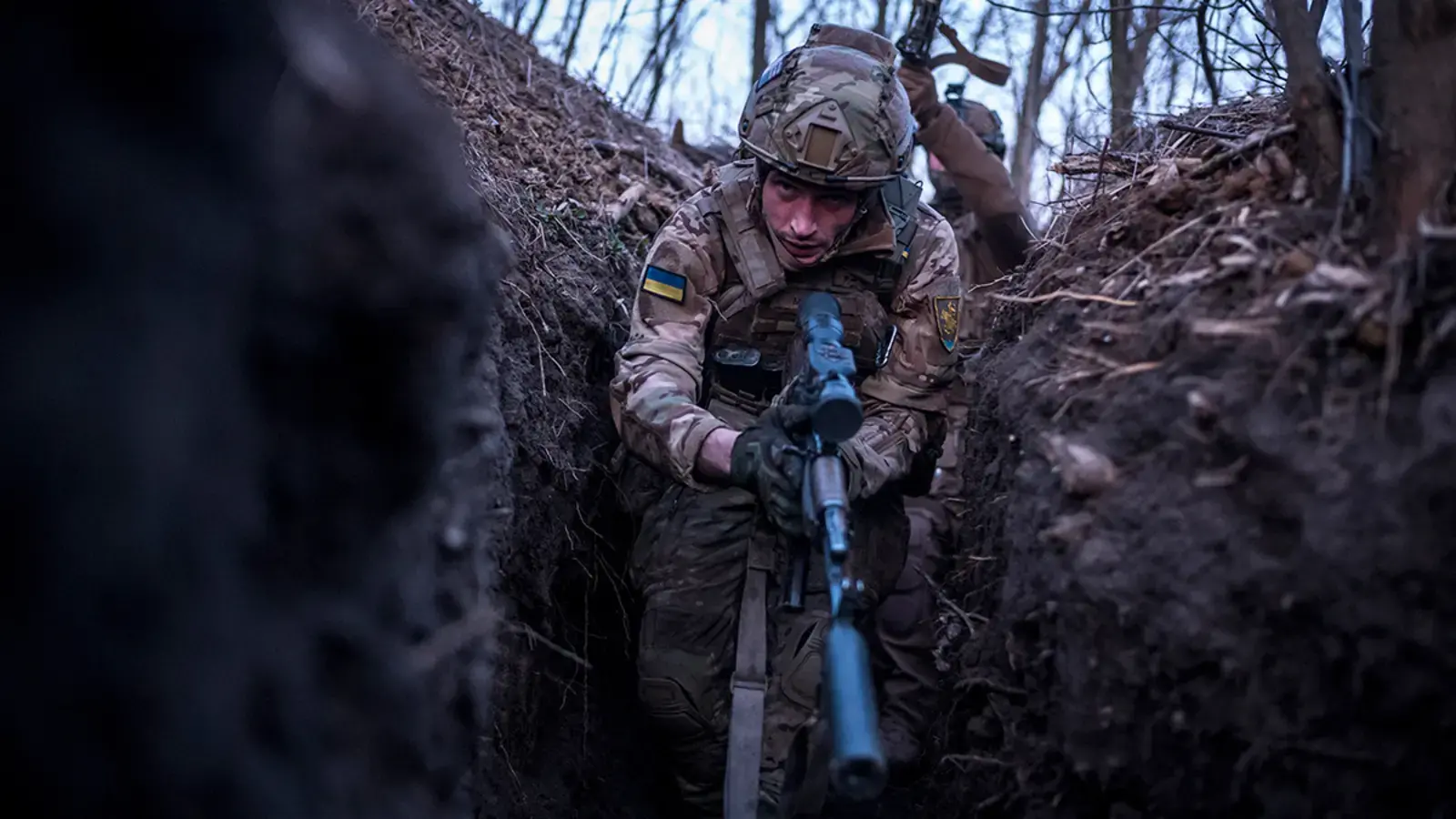What Happened to ‘Stalemate’ in Ukraine?

The two-year-old war in Ukraine—which is far from deadlocked—could pivot dramatically in the coming months. U.S. decisions will play a decisive role.
April 19, 2024 2:49 pm (EST)

- Expert Brief
- CFR scholars provide expert analysis and commentary on international issues.
For months, no word was used more often to describe Russia’s war against Ukraine than “stalemate.” For generals and policymakers, military analysts and journalists, the term helped capture the difficulty each side faced in making major gains against the other.
The image of a deadlocked war shaped the policy debate as well. To advocates of a cease-fire, it bolstered the case for negotiation. To critics who felt the Joe Biden administration was too cautious, frozen front lines meant Washington had not offered enough aid when doing so could have made a difference. Still other critics, fearing an unending conflict ahead, began calling U.S. aid futile and wasteful.
More on:
But while the word stalemate provided a handy summary of the war as Ukraine’s counteroffensive petered out in the second half of 2023—with both sides unable to make more than small gains—the term has now become obsolete. In 2024, the most important questions the two sides face are about a possible break in the stalemate. Russia and Ukraine could soon be looking at a transformed conflict—one in which both have real reasons for hope as well as fear.
Ukraine’s Shrinking Defenses
Ukraine’s fears center on what happens if the politically fractured U.S. Congress continues to hold up aid, especially weapons supplies. The U.S. ambassador in Kyiv, Bridget Brink, calls the outlook “dire.” In House testimony on April 10, General Christopher G. Cavoli, who commands U.S. military operations in Europe, described Russia’s five-to-one advantage in artillery shells—and predicted it would soon grow to ten to one.
Uncertainty about U.S. aid is not the only factor making it harder to hold fast against a new Russian offensive. Ukraine has been scrambling since late last fall to strengthen its own defensive fortifications, with unclear results, and the country’s domestic politics have further complicated the matter. Kyiv’s military and political leaders have been arguing about conscription policy for months, and although parliament finally passed a law lowering the draft age, the delay could mean a continuing shortage of troops on the front lines for the rest of the year.
Russia’s newly amped-up military strategy heightens the danger still more. Last winter saw fewer attacks on Ukrainian cities and infrastructure than many observers expected, but Moscow has once again increased strikes against power plants and urban targets. The result is a spike in casualties and a loss of electricity in large parts of some cities. Russian forces are also relying more heavily on “glide bombs”—old-fashioned explosives that are equipped with wings and guidance systems and fired from planes beyond the reach of Ukrainian air defenses.

More on:
Unleashing Ukraine
Taken together, these trends paint a grim picture for Ukraine. Yet, Russia, too, has to reckon with the chances of an enhanced Ukrainian campaign—a prospect that depends largely but not exclusively on whether the U.S. Congress approves more aid. Congressional action could have an early effect on Ukrainian supplies of such military staples as artillery shells and air defense components, making it less necessary to ration them so strictly. An increase in aid is also likely to have an indirect impact on Ukrainian manpower levels by boosting the confidence of new recruits, limiting draft evasion, and reviving the national standing of the country’s political and military leaders.
The ability to hold off Russian pressures on the front lines will not by itself turn the war’s tide in Ukraine’s favor. Success of that kind will depend on whether the Biden administration—and its European partners—are also willing to loosen restrictions they have imposed, or tried to impose, on Ukrainian strategy and operations.
If Ukrainian forces possessed enough longer-range missile systems, they would be able to reduce—perhaps even neutralize—Russia’s use of Crimea as a rear area supporting its troops on the front lines. (Bringing down the Kerch Strait Bridge between Crimea and mainland Russia—an edifice closely associated with Russian President Vladimir Putin himself—would add a pointed political-psychological flourish to the setback.) If Western governments stop discouraging attacks on oil refineries far from the front, Kyiv’s drone operators could begin to threaten the supply of fuel for both the Russian domestic market and for military operations in Ukraine. A further loss of ships in its Black Sea fleet would put Moscow still more desperately on the defensive—and even increase the risk of troop mutinies, draft riots, and second thoughts within Russia’s elite.
This range of outcomes—from major Russian gains at one extreme to much more robust Ukrainian strategy at the other—makes clear how fleeting the seeming stalemate of the war was. Even the modified term “dynamic stalemate” does not fully capture the very different results the coming year could bring. By the time the third anniversary of Putin’s invasion approaches, in February 2025, there is a very real chance that one side will have won and the other lost. Western policymakers need to reckon with—and act on—these possible outcomes.
 Online Store
Online Store